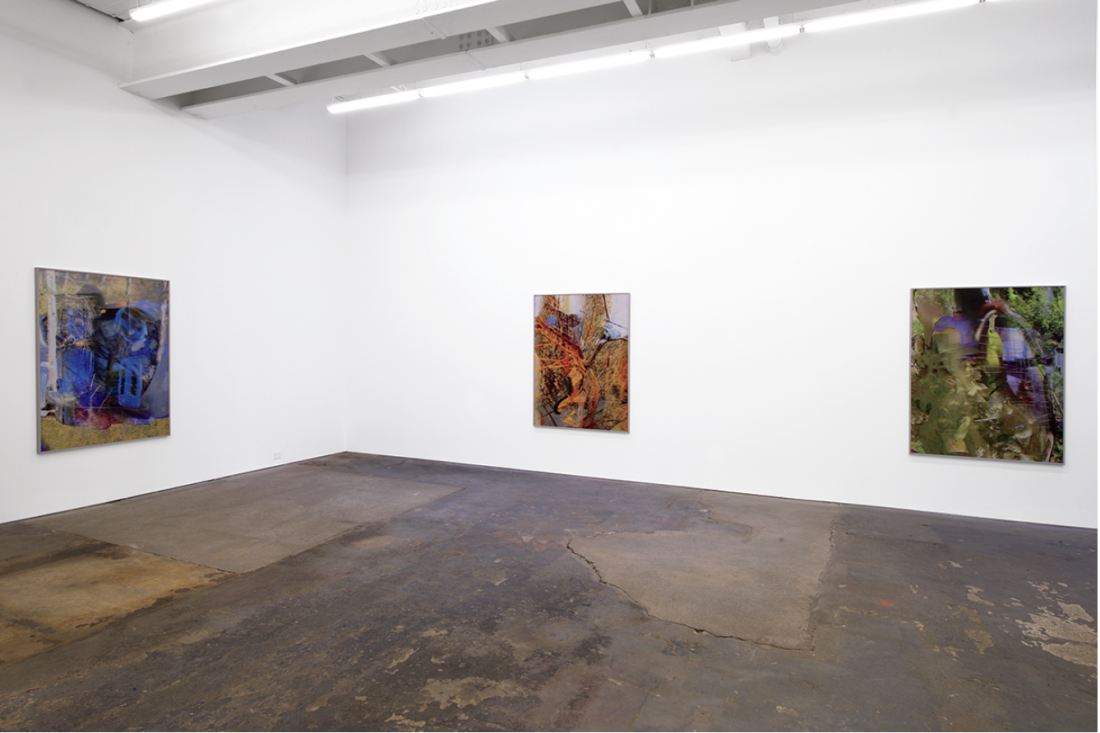Willy Le Maitre
“New arrangements in the drama of looking” might be the mission statement for Canadian artist Willy Le Maitre’s lenticular photographs. The work is an update, in other words, on a well-established tradition in art—to upend accustomed habits of viewing, purely through formal means. Writing about the work, the critic Blake Gopnik talks about this tradition as one of visual “indeterminacy…one of the crucial bywords of modern art at least since the time of Cézanne and Picasso.”
Artworks considered indeterminate make special demands on the viewer. It’s a program for art, for which Robert Hughes coined the phrase “the Shock of the New.” The title of a 1980 TV series he wrote and hosted for the BBC, Hughes described a dynamic for art-making that was essentially avant-garde. Pushing forward, out ahead of the general public, modern artists work to broaden the intelligibility of contemporary experience, and this happens primarily in a visual key. As narrated by Hughes, each moment of innovation has historically specific circumstances—“the Shock of the New” is a migrating phenomenon. For instance, the visual disjunctions of Cubism are now familiar to the point of seeming decorative. In Le Maitre’s work, he uses lenticular images to revive this dynamic of dislocated (or fresh) looking in art. If the results are truly shocking, the question is, what historical conditions could the work be said to express?

Willy Le Maitre, particulated playground, 2016, 3D lenticular print, 48 x 36 inches, edition 1/3 + I AP. All photos: Phil Grauer. All images courtesy CANADA, New York and the artist.
Used typically to make crude picture animations, lenticular technology dates from the post- WWII period. Two or more images are animated when overlaid by a screen of finely ribbed plastic. Vision gets refracted one way or the other according to the angle of the ribs (and the angle of vision), each rib functioning as a lens that magnifies the strip of image that lies underneath it. Early uses of this novelty technique included badges for Dwight D Eisenhower’s 1952 presidential campaign (“I like Ike” alternating with a head shot of the candidate), or so-called Flicker Rings with pictures of Batman or Curly from the Three Stooges on them.
A less familiar term for this process is “Autostereo.” The name points to the technique’s origins in early experiments in optical illusion. The “auto” stereo innovation was a kind of improvement on the late 19th-century technique of “stereoscopy.” When viewed with the aid of the eyeglass-like stereoscopic viewer, slightly different images seen side-by-side take on the illusion of 3D depth. Both vision technologies are approximations of the physiological process, designed to demonstrate a specific aspect of how vision works—that is, at the intersection of interior and exterior sight. The tangible artifice produced by a stereoscopic or lenticular image is in the end a slight entertainment, but one that helps highlight the role the mind plays in visual perception.
Internal vision has long been a preoccupation of Le Maitre. The artist posits stereoscopic effects as a model for what is seen by the mind’s eye. In the imperfection of the 3D illusion, Le Maitre finds an expanded realm for exploration, primarily by making films that combine digital and 3D technology. This extensive body of work characteristically uses digital effects to extend and distort 3D treatments of real world imagery. A phantasmagoric experience results, one that recognizably partakes of both artifice and the chimera of dreams. Freedom from the constraints of the material world is of course a capacity of the mind, and art often provides the best methods for making this capacity tangible.

Installation view, “title flight tiger compound returns,” 2016, CANADA, New York.
Film is typically described as a dreamlike medium. Its invitation to sit in the dark and be off-duty somehow lends a legitimacy to even the most outlandish of speculative journeys it can fabricate—as a pastime, and as a form of experience. Always tasked with the job of convincing viewers of their plausibility, the same benefit of a doubt is less frequently extended to artworks. Arguably, this means Le Maitre’s lenticular works are a more risky proposition for the artist.
In his hands, lenticular technology becomes, as Blake Gopnik noted, a tool of indeterminacy, with corresponding effects on the viewer. By combining photographs into a single picture frame, Le Maitre condenses the spacetime continuum that each image implies. The collages he makes are deliberately disjunctive, their smashed perspectives rendered dynamic because of the way the lenticular lens orchestrates viewer engagement.
What results is a destabilized position for the viewer. As Phil Grauer, of the New York gallery, Canada, observes: “You can’t conquer these works.” The space they construct is ambiguous without hope of resolution. Making vertiginous space inside the picture plane could be said to disrupt viewer expectations of coherence. From another perspective, what Le Maitre is doing is creating a more complex visual field for viewer apprehension. Beyond the capacity of the lenticular to create such an effect, what field of reference is the artist implying here? The quick answer would be Pokemon, the augmented reality that is now an expected component of everyday life. In a broader sense, it’s not hard to find other artworks that also traffic in a figure-ground confusion. What this suggests is that contemporary life conjures up not only a collapsed picture plane, but also one that is infinitely expanded. Le Maitre’s insight is to combine the two, his use of the constraint of the picture frame alerting us to the truth of this new reality. ❚
“title flight tiger compound returns” was exhibited at Canada, New York, from May 6 to June 5, 2016.
Rosemary Heather writes about art, the moving image and digital culture for numerous publications internationally. She is Editor-in- Chief of the new digital imprint Q&A <qqqandaaa.com>.

